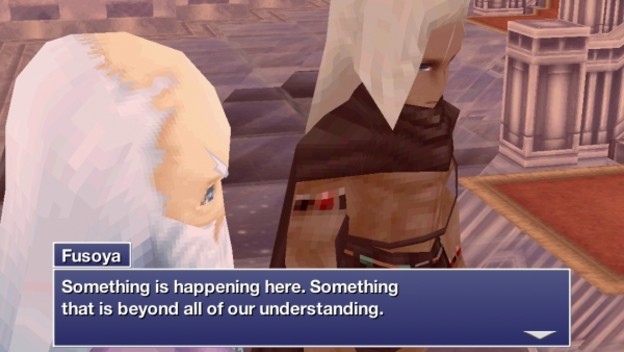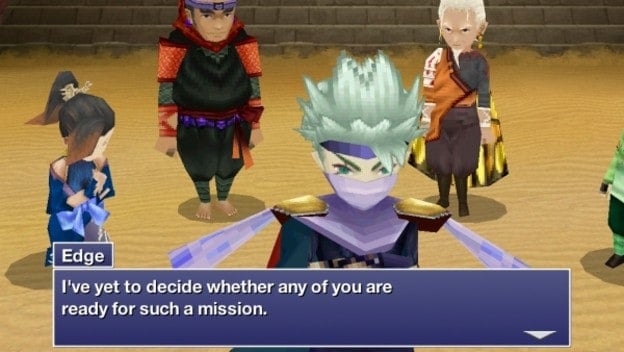The notion is old hat for Square Enix by now. The company makes a Final Fantasy game. It becomes a beloved part of our libraries and lives. We embrace it. The company knows we’re suckers, and puts out rereleases and remakes. Eventually, spin-offs ensue. The result is distrust in the publisher, as well as an array of extra ports we’ll never play.
With some Final Fantasy titles, the notion is at least palatable. Getting to play enhanced versions of Final Fantasy X and X-2 with the Japanese special editions’ content is appreciated. Getting Final Fantasy VII on as many platforms as possible is understandable. Then, there are the oddballs. That’s when we get another version of Final Fantasy IV: The After Years , a game that probably shouldn’t have even existed, let alone received not one, not two, but coming up on five ports.
Final Fantasy IV: The After Years is what happened when Square Enix remembered Final Fantasy IV is a lot of people’s favorite installment in the series. The company decided to capitalize on nostalgia with a mobile game, way back before smartphones made gaming on phones attractive. It had a microtransaction mentality, with the story divided up into 10 chunks centered around characters with strong to weak ties to the heroes we knew and love from the original game. The result was something that wasn’t exactly stellar, but at least passable. It went on to get a WiiWare release a year later, retaining its unfortunate divisions and pricing. It wasn’t until 2011 that Final Fantasy IV: The Complete Collection for the PSP made it affordable. Naturally, a 3D remake came to smartphones, and now the PC port of the more recent mobile iteration is about to arrive.
The thing about this game is, it isn’t exactly great. Part of the magic of Final Fantasy IV was how neatly everything tied up and came together at the end. There weren’t really any unresolved issues. Peace reigned. Final Fantasy IV: The After Years undoes that ending with something of a contrived plot. New characters are brought in, but not given the development necessary for us to care about them. The combat is entertaining, especially given moon phases that increase difficulty and unity attacks, but combat alone can’t save the game. Its originally mobile nature hurts it, keeping things from flowing as one would expect in a RPG.
Which is why Final Fantasy IV: The After Years didn’t deserve another opportunity to stand in the spotlight. It wasn’t the strongest release. It was pure fanservice from a company that’s come to specialize in such things. It was something to be enjoyed in bursts, mainly because it meant we’d get to see characters like Rydia, Edge, Cecil, and Kain again.

Plus, its previous releases were all in forms that no one would ever take very seriously. The original mobile release was a simple phone game. The WiiWare release felt like an obligation – a means of helping out Nintendo and giving people a means to play it. The PSP version was a bonus, since most people bought that collection to have Final Fantasy IV again. As for the iOS and Android versions, well, Square Enix already had the building blocks from the 3D port of Final Fantasy IV . Might as well.
The fact is, Final Fantasy IV: The After Years isn’t one of Square Enix’s best. It certainly wouldn’t be included on any “Top 10 Final Fantasy ” game lists. It may not even be in a list of spin-offs. It’s usually one of those games that’s just there. Sometimes you remember it exists, like when Square Enix announces another port, but then you quickly forget because of its nature. We can understand why the company did this, but Final Fantasy IV: The After Years certainly didn’t deserve another port.
